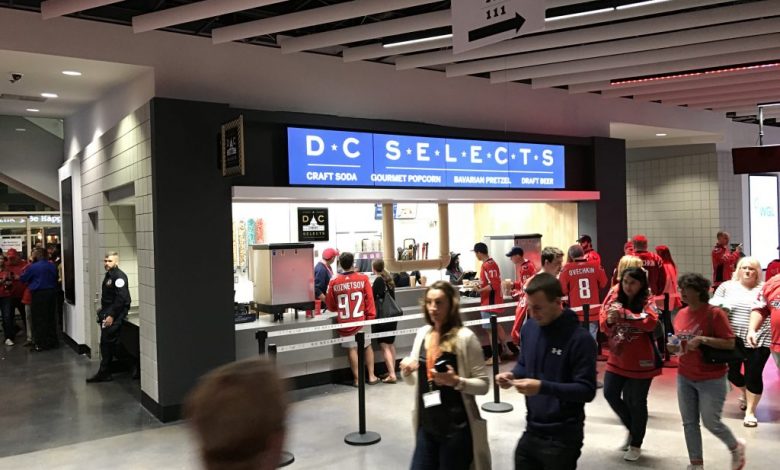Featured Project: Ping HD Behind Digital Signage Upgrade at Capital One Arena
All of the more than 200 displays that were installed can be reprogrammed instantaneously, in total or individually.
Denver-based Ping HD, a provider of digital signage hardware, software, design and other services, was recently chosen by Washington D.C.’s Capital One Arena to give a major digital upgrade to the venue as part of a $40 million renovation it underwent.
Capital One is home to the Washington Wizards of the NBA and Washington Capitals of the NHL; aside from that it hosts more than 47 million guests during its 220-plus events each year.
According to the facility’s owners, everything was state-of-the-art when the 20,000-seat arena opened in 2007. But over time that became no longer the case and as part of the renovation, the venue needed a significant upgrade in technology.
Transforming the food and beverage experience for guests was a major consideration. Each concession area needed to be flexible enough to keep up with the high demands of such a busy arena, because with events hosted almost daily, the arena needed to be able to change menus quickly.
Working closely with the onsite concessionaire, Ping HD installed more than 200 displays within the dining areas of the arena. Within each concession area, multiple digital menu boards were installed. Digital content was designed for each display to educate and inform patrons and help speed up the ordering process.
The arena needed to manage and change their new menus quickly, and Ping’s EngagePHD digital signage software was chosen as the content management system for the project because staff can manage all 200 displays within a single cloud-based interface.
Video wall ribbons were installed above concession stands to serve as dynamic branded headers. These digital headers give the concessionaire the ability to change product offerings and rebrand the stand at any time. The high-impact content and animations shown on the displays help grab the attention of patrons as they walk through the concourse.
Installation of the displays started in August 2018. To date, 180 have been installed. The project is scheduled to wrap up by the close of 2018.




